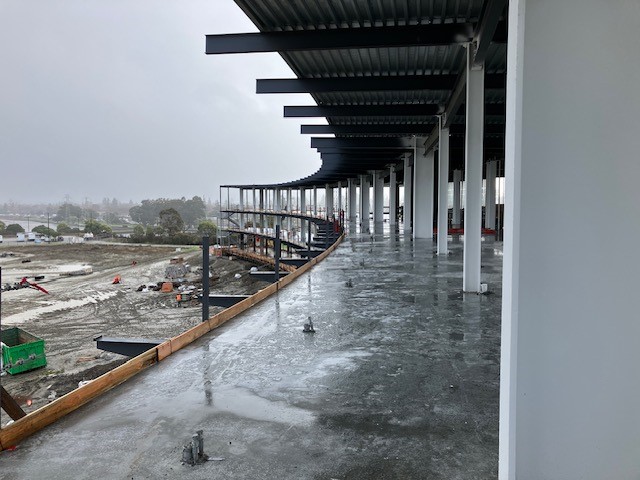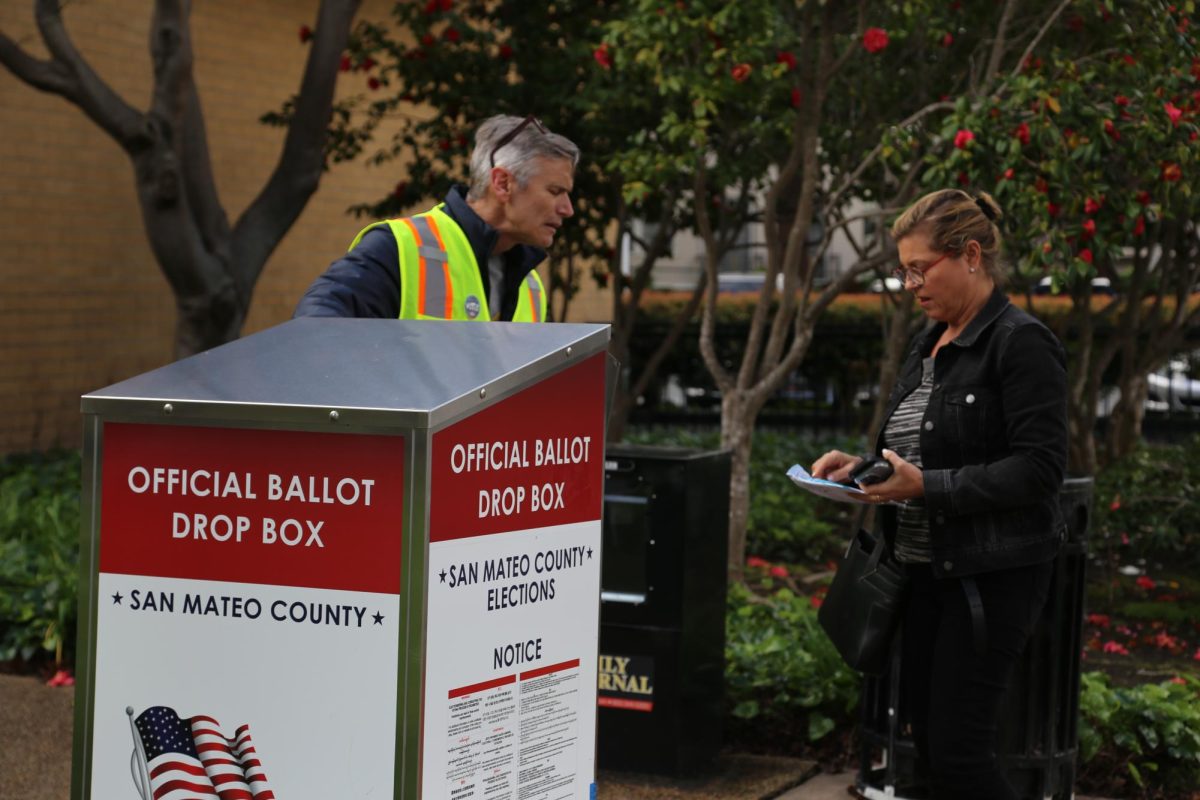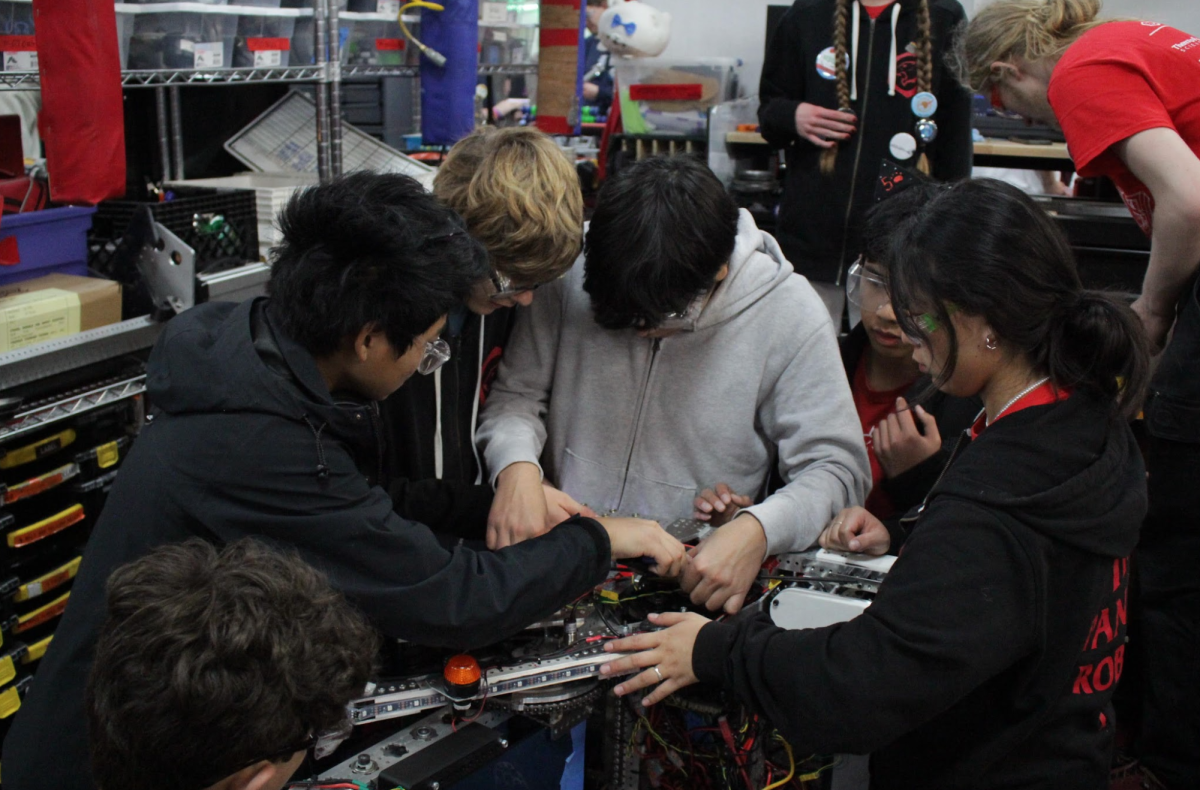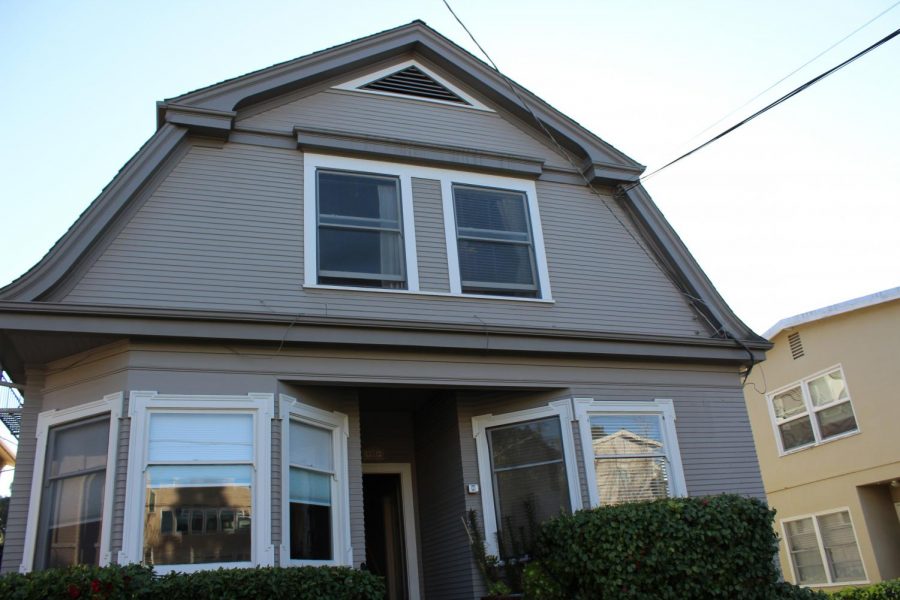It’s time to end single-family zoning
Quadruplexes, as pictured above on Lorton Avenue, are a great way to create denser housing in suburban areas, but they’re not allowed in much of the Bay Area due to zoning laws.
March 29, 2021
In my neighborhood, there are signs outside houses reading, “In this house we believe: Black Lives Matter, Science is real, and Kindness is everything.” It’s a lovely sentiment, but this doesn’t reflect the actual policy we put into place. Burlingame, along with many other cities on the Peninsula, suffers from an acute problem: the astronomical cost of rent. A variety of factors cause this, but the most notable is the shortage of housing within the Bay Area and California. The amount of units that can be built are limited by single-family zoning, yet Burlingame and much of the Bay Area only allows for single-family homes to be built, with residents fighting to maintain this status. That fight has been contrary to the values these signs claim to support. We can place rhetoric on our lawns about how “Black Lives Matter” and “kindness is everything”, but our words mean nothing when they’re not backed by policy.
The housing policies we have don’t promote diversity, and as a result, Black people made up a single percentage point of the population within Burlingame in the 2010 census. Single-family zoning is significantly more damaging to the environment than most kinds of affordable housing, with the per capita carbon footprint growing exponentially within single-family lots. Promoting policies that cause higher rent are not kind. In the past 10 years, the growth of Silicon Valley and the rest of the Bay Area has been exponential but the influx of capital and people hasn’t been met with policy to protect working class people’s ability to live and work in their communities.
We’re ranked 49 out of the 50 states in housing units per capita, real estate prices are astonishingly high and there are too many people and too little space. Conversations around the benefits of eliminating single-family zoning, the policy that allows only one freestanding building per lot, in San Francisco and other urban areas in California, have increased in recent years. Eliminating single-family housing would allow parts of San Francisco and San Jose to build high rise and multi-level housing to significantly increase population density. I certainly see the benefits of creating denser housing within parts of cities, but I also think an alternative solution could help alleviate the housing crisis: eliminating single family zoning in suburbs, such as Burlingame.
That might not sound like a crazy idea — Burlingame already is filled with apartment complexes in certain neighborhoods and there are large construction projects across the city. There are several neighborhoods within Burlingame specifically that allow multi-family structures to be built, whether in the form of quadruplexes, apartment structures, or condos. However, not all neighborhoods in Burlingame allow for these structures and the fight against expanding this type of zoning within suburbs is well documented, a prime example being the fight against California Senate Bill 50 (CA SB-50), which would have led to the end of single family zoning. The Peninsula’s state senator at the time, Jerry Hill, opposed the bill that lost narrowly within the state senate.
As someone who’s grown up surrounded by the very groups who ended this bill — wealthy homeowners — I plead you. I understand the appeal of keeping our communities as they are, but doing so comes at a price. The lack of affordable housing for working class families is sorely needed in places like the Peninsula. Even the cheapest houses sell for nearly one million dollars within Burlingame, and that translates into high rent prices. There’s been a lot of internal migration within and towards the Bay Area in recent decades, but by maintaining single-family housing, we’re lessening the diversity that we in the Bay Area claim to support.
As rent has gotten higher, a significant amount of working class people have moved to places in the East Bay and Sacramento. This is a missed opportunity for expanding diversity within places like Burlingame. There hasn’t been housing that these working class people could realistically move to on the Peninsula. Peoples’ commutes to jobs centered in San Francisco are easier from Burlingame than from Concord, and the access to great public education and a high quality of life are a draw for many. Unfortunately, the cost of rent has played a major factor in making areas like Burlingame unaffordable for these groups of people. This migration of working class people primarily impacts Black and Hispanic people, causing Burlingame to lack racial diversity and the perspective of multiple classes. Instead of promoting diversity, our housing encourages the concentration of wealth within insulated communities.
Cities have dragged their feet when it comes to making housing more affordable, but surrounding areas have a chance to make a serious impact. If we build apartments and other forms of denser housing in Burlingame, the housing strain on places like San Francisco would diminish significantly. San Francisco doesn’t want to urbanize certain parts of the city, but we could achieve the same goals of increasing the overall amount of housing in the Bay Area by embracing free market values and making places like Burlingame more affordable. If we deregulate the types of housing developers are allowed to build and allow them to create more houses, we will not only increase available housing but also lower the rates of rent. The need for expanded housing is overwhelming, and policy similar to CA SB-50 would help solve this pressing issue. This is a problem that is better solved sooner than later, as our population continues to grow and with it, the cost of living here. Every year we attract more people, yet it’s becoming more and more expensive to actually live here. It’s time to reject single-family zoning and replace it with a fairer, kinder and more sustainable forms of multi-family housing.




![WASC looks for more than the basic California State standards. According to chairperson Mike Woo, “As new rules and new concerns come up through society, [WASC] look[s] is the school doing something about that. Like the biggest trend post-COVID is mental wellness. So is your school doing something to address the mental health of the students? Along with are they still doing the proper academics?”](https://theburlingameb.org/wp-content/uploads/2024/03/IMG_3401-1200x1200.png)























![“For me personally, I want [others] to see the music program as a strong union because we can really bring out the life of our school,” Vega said. “We need music, you know? Otherwise, things would be really silent and dead.”](https://theburlingameb.org/wp-content/uploads/2024/03/unnamed-1200x801.jpeg)










Joe Hamilton • Apr 3, 2021 at 9:45 pm
You should specifically write to Jackie Speier, your Congresswoman.
She lives in Hillsborough, also 94010.
She has always supported exclusivity for her community.
You are being played by Marxist politicians like Jackie.
She laughs at you every day.